Quick Contact
 66300233
66300233
info@newmoonqatar.com
Quick Contact
 66300233
66300233
info@newmoonqatar.com
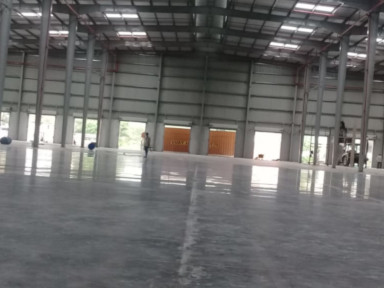
We are leading service providers for Tremix Flooring or Vaccum dewatered flooring (VDF) & IPS Flooring in Qatar. Various Floors in factories, warehouses and industries has extensive application of concrete which is a versatile flooring and has been in use for a long time. To mitigate the normal issues you face with concrete, a system was devised to improve the properties of concrete floors. This system is called Vacuum Dewatered Floors (VDF) or Tremix Flooring.
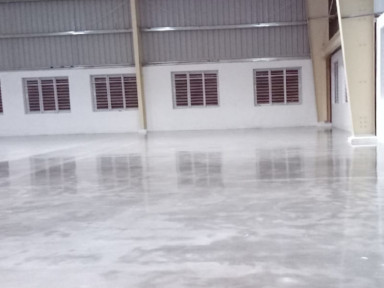
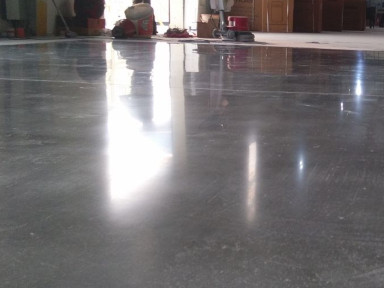
1. What is VDF Flooring Vacuum Dewatered Flooring (VDF) Or Tremix / Trimix flooring?
VDF Flooring also known as Vacuum Dewatered Flooring .VDF/Tremix/Trimix flooring is a special type of flooring mostly being done in the industrial sector. It provides better wearing and tearing properties. High Strength, Longer Life, Better Finish and Faster Work. This type of floor is suitable for high abrasion & heavy traffic movement. It is generally used for industrial purpose, where rigid surface necessary for machine foundation, light load carrier vehicle and light weight cranes.
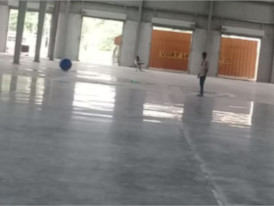
2. VDF/TREMIX/TRIMIX Process
Floors in factories and industries have concrete being the most versatile of flooring material, has been in use for a long time. To overcome the deficiencies of concrete a system was devised to improve the properties of such concrete floors. This system is "Vacuum Dewatered /TREMIX/TRIMIX floors.
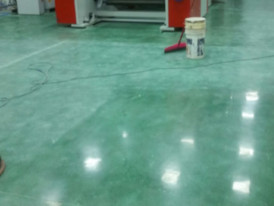
3.Benefits of VDF/TREMIX/TRIMIX flooring
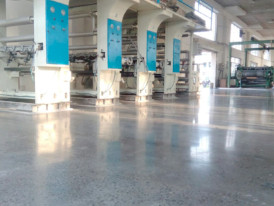
4.What is VDF/TREMIX/TRIMIX flooring.? where it is used?
VDF is the Vacuum dewatered flooring. It is used in industrial buildings where in the flooring is subjected to huge abrasion. It is vacuum dewatered flooring. Used in high wear & tear areas such as roads, parking lots, dock storage areas where heavy vehicles move, and short time maintenance isn't desired. with mix of reinforcement layer & steel fiber, RCC surface becomes hard enough so as to not developed cracks in short time. Holding strength very good, long life and virtually maintenance free.
Why use Vacuum Dewatered Flooring?
The Vacuum Dewatered (VD) Flooring method, is a system for laying high quality concrete floors with superior cost-effectiveness. The key to the use of this method is the dewatering of concrete by vacuum process surplus water from the concrete is removed immediately after placing and vibration, reducing the water-cement ratio to an optimum level. Therefore, adopting the VD flooring method facilitates use of concrete with better workability than what is normally possible. A lowered water to cement ratio due to vacuum dewatering leads to improvement in each of the properties of concrete properties listed above.
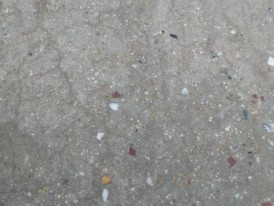
What are the uses of VDF/TREMIX/TRIMIX flooring?
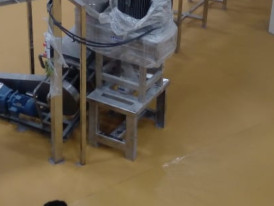
Groove Cutting?
Concrete expands and contracts constantly with changes in the temperature, the moisture content of the air and due to drying of cement which results in shrinkage. The movements result in stress that can cause cracks in the concrete and destabilization of the base.
How to do the VDF/TREMIX/TRIMIX Flooring?
Procedure: In this system of VDF Flooring or Vacuum Dewatered Flooring, concrete is poured in place & vibrated with a poker vibrator especially to the sides of the panel for floor thickness more than 100mm. Then surface vibration is done using double beam screed vibrator running over the surface, supported on channel shuttering spaced 4.0 meters apart. The screed vibrator is run twice to achieve optimum compaction & levelling. The vibrated surface is then levelled using a straight edge.
After this a system of lower mats & top mat is laid on the green concrete & this is attached to a vacuum pump. This draws out surplus water if any. The concrete is left to stiffen. When the base concrete has stiffened to the point when light foot traffic leaves an imprint of about 3-6 mm, Floor Hardener is applied at an even application rate of between 3-5 Kg/Sqmt. Any bleed water should now have evaporated, but the concrete should have a wet sheen. The concrete is then further compacted and levelled using Power Floater followed by finishing as per the requirement using Power Trowel.
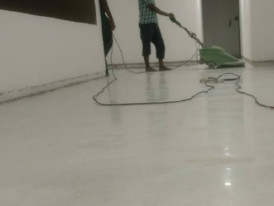
What is the Grade of Concrete using for VDF /TREMIX/TRIMIX flooring?
Grade of concrete is the index of the strength of concrete. Minimum grade of concrete used shall be M15 conforming to IS-456. Grade of concrete is decided by the Design Mix but it is affected by Batching, Mixing, Placing, Curing etc
What is Water Cement Ratio for VDF/TREMIX/TRIMIX ?
The water–cement ratio is the ratio of the weight of water to the weight of cement used in a concrete mix and has an important influence on the quality of concrete produced. A lower water-cement ratio leads to higher strength and durability but may make the mix more difficult to place. Placement difficulties can be resolved by using plasticizers or super-plasticizers.
Concrete hardens as a result of the chemical reaction between cement and water (known as hydration, this produces heat and is called the heat of hydration). For every kilogram of cement about 0.25 kg of water is needed to fully complete the hydration reactions. This requires a water-cement ratio of 1:4 i.e., 0.25.
However, a mix with a w/c ratio of 0.25 may not mix thoroughly, and may not flow well enough to be placed, so more water is used than is technically necessary to react with the cement. But this adversely affects the strength of concrete. For higher-strength concrete, the required lower water: cement ratios is maintained using plasticizer to increase flowability. Typical water-cement ratio varies from 0.25 to 0.45.
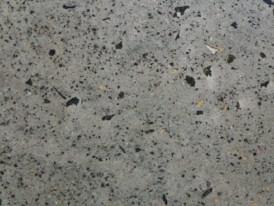
What is Polished Concrete in Flooring?
A polished concrete floor has a glossy, mirror-like finish. newmoon provide vast design options for polished concrete. We can polish concrete in nearly any color, creating patterns with saw cuts or embed aggregates into the concrete prior to polishing.
The reflectivity of the floor can also be controlled by using different levels of concrete polishing. Polished concrete is popular in commercial buildings because it is easy to maintain. Maintaining polished floors requires dust mopping and occasional use of a cleaning product.
Simply put, polishing concrete is similar to sanding wood. Heavy-duty polishing machines equipped with progressively finer grits of diamond-impregnated segments or disks (akin to sandpaper) are used to gradually grind down surfaces to the desired degree of shine and smoothness.
How to do the Polishing of Concrete?
Initial Rough Grinding: The process begins with the use of coarse diamond segments bonded in a metallic matrix. These segments are coarse enough to remove minor pits, blemishes, stains, or light coatings from the floor in preparation for final smoothing. Depending on the condition of the concrete, this initial rough grinding is generally a three- to four-step process.
Fine Grinding: The next steps involve fine grinding of the concrete surface using diamond abrasives embedded in a plastic or resin matrix. Crews use ever-finer grits of polishing disks (a process called lapping) until the floor has the desired sheen. For an extremely high-gloss finish, a final grit of 1500 or finer may be used. Our experienced polishing technicians know when to switch to the next-finer grit by observing the floor surface and the amount of material being removed.
Impregnating Sealer Application: During the polishing process an internal impregnating sealer is applied. The sealer sinks into the concrete and is invisible to the naked eye. It not only protects the concrete from the inside out, it also hardens and densifies the concrete. This eliminates the need for a topical coating, which reduces maintenance significantly (versus if you had a coating on it). Some contractors spread a commercial polishing compound onto the surface during the final polishing step, to give the floor a bit more sheen. These compounds also help clean any residue remaining on the surface from the polishing process and leave a dirt-resistant finish.
What are the different ways of Polishing?
Polishing can be done by wet or dry methods:
Dry Polishing: Although each has its advantages, dry polishing is most commonly used in the industry because it is faster, more convenient and environmentally friendly. With dry polishing, no water is required. Instead, the floor polisher is hooked up to a dust-containment system that vacuum up virtually all the mess.
Wet polishing: Wet polishing uses water to cool the diamond abrasives and eliminate grinding dust. Because the water reduces friction and acts as a lubricant, it increases the life of the polishing abrasives. The chief disadvantage of this method is the cleanup. Wet polishing creates a tremendous amount of slurry that crews must collect and dispose of in an environmentally sound manner.
Typically, dry polishing is used for the initial grinding steps, when more concrete is being removed. As the surface becomes smoother, and crews switch from the metal-bonded to the finer resin-bonded diamond abrasives, they generally change to wet polishing.
What is the work Methodology of Concrete Polishing?
(Concrete Polishing Specifications or Concrete Polishing Methodology or Concrete Polishing Procedure or Concrete Polishing Specification)